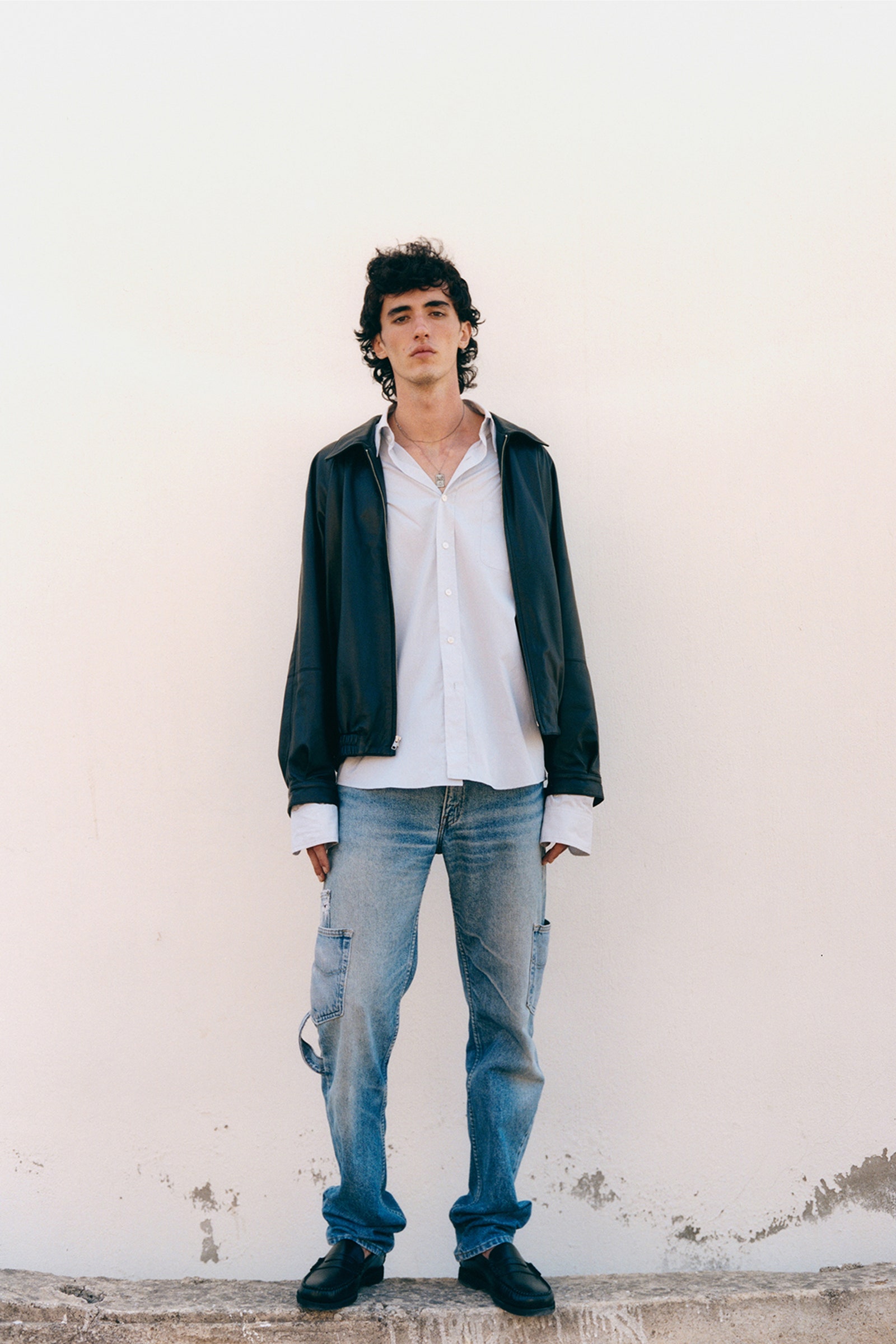We’re living, of course, in strange times. In a way, this almost archetypal normality makes sense. While fashion ostensibly thrives on newness, a bit of the familiar can help ground us
during these unstable times. In their most recent collections, many designers tried to soldier on in the face of the pandemic, and that’s swell—but most of the results felt utterly disconnected from a downright scary reality. In the face of all this uncertainty, the most successful collections offered the essentials: a really big fluffy sweater, a billowing button-up shirt, and some roomy khakis. These are pieces we understand on a visceral level—and that are, crucially, comforting in both a tactile and emotional sense. They look like the physical embodiment of the big hug we all need right about now.
Pure ease from Maryam Nassir Zadeh's new menswear capsule.
Esther TheakerIt’s no accident that this look is emerging now, right as menswear giants Brooks Brothers and, yes, J.Crew have fallen. Those brands trafficked in a lost American ideal, the datedness of which is especially apparent as our country grapples with its own dark legacy. What these modern brands are propositioning is a way forward inspired by those traditional forbearers, but decidedly different: business-casual, workaday classics reworked in ways that feel intentional without being flashy. Pants, for instance, aren’t droopy, but draped in a suave, elegant way. The shirting has a gently sculpted shape. The actual garments are recognizable, but the emphasis on silhouette and proportion makes them stand out.
The look—normcore, but all grown up— savvily marries the sweatpants-heavy aesthetic to classic menswear pieces so we can feel dressed up even if we’re just lounging around the house ad infinitum, our professional lives now winnowed down to a front-facing camera. It’s taking that stuffy formality out of garments that were once meant for office life — a retread of what made Armani famous, and not coincidentally the reason why his early work feels so relevant right now. “None of us are getting dolled up and going anywhere,” Rice says. “It’s a nice alternative to, you know, wearing exercise clothes and sweatpants, but not being ridiculous and wearing these fancy clothes. I think that's what draws people to these looks: it’s practical and could be worn every day but they’re a step up from the dumpy clothes that people have probably been wearing since March.”
This new wave is in part due to extenuating circumstances: the pandemic robbed us of runway shows but put a newfound emphasis on photography, which gave the seasonal collections a more lifestyle-y feel. Lemaire, for example, presented a video of its models walking alone or in small groups. Set against a white industrial wall and set to the sounds of shoes clacking on the ground, it evoked the faraway image of people headed to work in the morning (albeit these people who were impossibly chic). It presented a vision of the world where these clothes make sense. Similarly, Maryam Nassir Zadeh’s collection was shot outdoors in a hilly, residential neighborhood—whether in Istanbul or Silverlake was hard to say. While the tenor is certainly moodier in the MNZ look book — no smiles here! — it showed where these clothes belong: on some cool disaffected youths skipping class in some suburb. All of which is a reminder of the power of suggestion and of the communal aspect of fashion. There is a real pleasure in dressing up with your friends, for your friends.
Thinking back on those catalog glory days, Rice hits on something that feels vital right now, as we’re all dealing with forced solitude. “It’s pictures of people cooking or hanging out with friends at a vacation house. It’s like an editorial, but for every day,” she said. “Which, right now, is probably really nice for people to see.”

